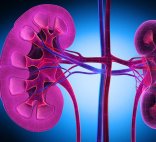Cardiovascular problems and lung complications are serious and potentially life-threatening conditions that may affect multiple myeloma patients. Many multiple myeloma patients, as is true of the general U.S. population, already have conditions such as high blood pressure, high cholesterol, or diabetes. These conditions place them at risk for venous thromembolic events (VTEs) and cardiovascular problems.
Venous Thromboembolic Events (VTEs)
Myeloma patients are at risk for serious and potentially life-threatening venous thromboembolic events because of their disease, the presence of individual risk factors, and the effects of anti-myeloma treatments.
VTE refers to a blood clot (deep vein thrombosis, or DVT), usually in the lower extremities. The blood clots may break loose, or “embolize,” and travel to a lung. A pulmonary embolus (PE) is a blood clot that has traveled to the lung. It can be fatal. PE and DVT symptoms are listed below. They should be reported to your medical team immediately.
DVT is the most common thromboembolic event. Symptoms include:
- swelling, aching, pain, tightness, or a hard or soft lump in the arm, leg, hand, or foot
- fast heartbeat
- veins larger than usual (distended)
Risk factors for clot formation include:
- lack of activity
- obesity
- smoking
- personal or family history of blood clots
- taking estrogen compounds (hormone replacement therapy)
- taking drugs to increase the number of red blood cells, such as epoetin (Epogen®, Procrit®) or darbepoetin alfa (Aranesp®)
- recent surgery
- having a central venous catheter in place
- prolonged air travel
Pulmonary embolus is a blood clot that travels to a lung. Symptoms include:
- anxiety
- fast heartbeat and fast breathing
- chest pain or new onset of shortness of breath
- coughing up blood
The immunomodulatory drugs (IMiDs) — Thalomid, Revlimid, and Pomalyst — in combination with dexamethasone are known to heighten the risk of VTE in myeloma patients. According to this article, published in the October 2017 Clinical Journal of Oncology Nursing Multiple Myeloma supplement, multiple myeloma patients who are taking an IMiD plus dexamethasone have a six-fold increased risk of having a venous thromboembolic event (VTE).
All patients who are receiving an IMiD in combination with dexamethasone should be given anticoagulant therapy. The type and dose of anticoagulant depend on individual risk factors that must be assessed by the treating hematologist/oncologist. Your doctor will review your personal and family medical history and perform a thorough check of your medical status, including a physical examination, to identify your risk factors.
Given the elevated risk for VTE among multiple myeloma patients, the following preventive strategies are recommended:
- regular exercise (such as walking or chair exercises, if walking isn’t possible) to prevent immobility
- compression stockings
- weight control
- keeping well hydrated
- regular cardiac check-ups and management of heart issues
- anticoagulation (blood thinner such as aspirin) for long car rides or plane trips if not already on an anticoagulant
- anticoagulation while taking IMiDs in combination with dexamethasone
- avoidance of drugs such as oral contraceptives or erythropoietin that increase the risk of blood clots
Cardiovascular Disease and Pulmonary Hypertension
Direct damage to the heart tissue is a potential short-term or long-term complication from anticancer therapy. Patients with myeloma are at higher risk if they have any of the following:
- history of smoking
- family history of heart disease in a first-degree male relative younger than 55 or female younger than 65
- high blood pressure
- obesity
- high cholesterol
- sedentary lifestyle
- diabetes
- vascular disease not involving the heart
- chronic kidney disease
- cardiac light-chain amyloidosis
In addition, many therapies for multiple myeloma that prolong overall survival may, paradoxically, expose patients to heart and lung problems. These problems may be lethal. The type of drug, how much of it is taken over time, the frequency and route of administration, the other drugs with which it’s combined, and the patient’s age and health history can all play a role in causing health problems. These problems may be heart failure, heart vessel disease, arrhythmias, high blood pressure, and high blood pressure that affects the lungs and the right side of the heart (pulmonary hypertension).
Medications Associated with Cardiovascular Side Effects in MM Patients
- cyclophosphamide (Cytoxan)
- cisplatin
- doxorubicin
- carfilzomib (Kyprolis)
- bortezomib (Velcade)
- dexamethasone
- lenalidomide (Revlimid)
- pomalidomide (Pomalyst)
The FDA-approved package inserts for the following drugs are of particular note:
- Both Revlimid and Pomalyst carry warnings that the combination of either drug with dexamethasone can cause an increased risk of arterial and venous thromboembolism, myocardial infarction (heart attack), and stroke.
- The package insert for Kyprolis carries the following warnings:
- Cardiac adverse reactions including heart failure and ischemia (restriction of blood supply to tissues): Monitor for cardiac complications.
- Treat promptly and withhold Kyprolis.
- Pulmonary Hypertension: Withhold dosing if suspected.
- Pulmonary Complications: Monitor for and manage dyspnea (difficulty breathing) immediately; interrupt Kyprolis until symptoms have resolved or returned to baseline.
Withholding medication, using slower infusion times, limiting fluids, and providing supportive therapy has been successful in managing these potentially lethal side effects.
Patients with pre-existing heart problems should involve their cardiologists before starting therapy with any of the drugs known to cause heart and lung complications.
The International Myeloma Foundation medical and editorial content team
Comprised of leading medical researchers, hematologists, oncologists, oncology-certified nurses, medical editors, and medical journalists, our team has extensive knowledge of the multiple myeloma treatment and care landscape. Additionally, Dr. Brian G.M. Durie reviews and approves all medical content on this website.
Last Medical Content Review: August 10, 2021







